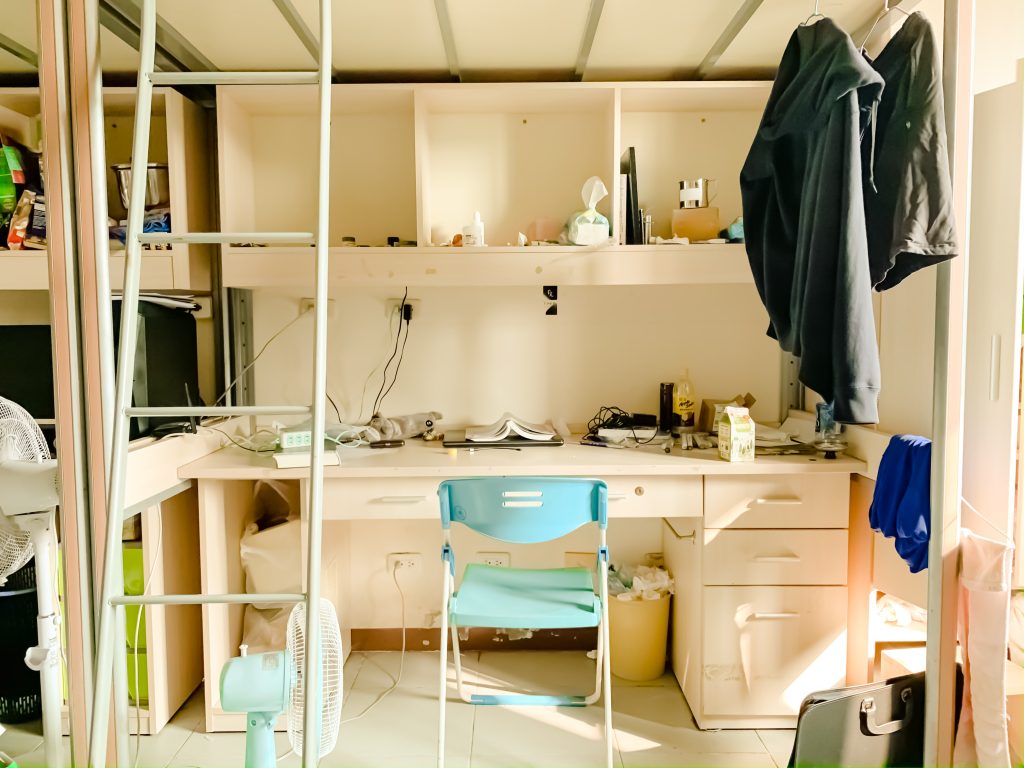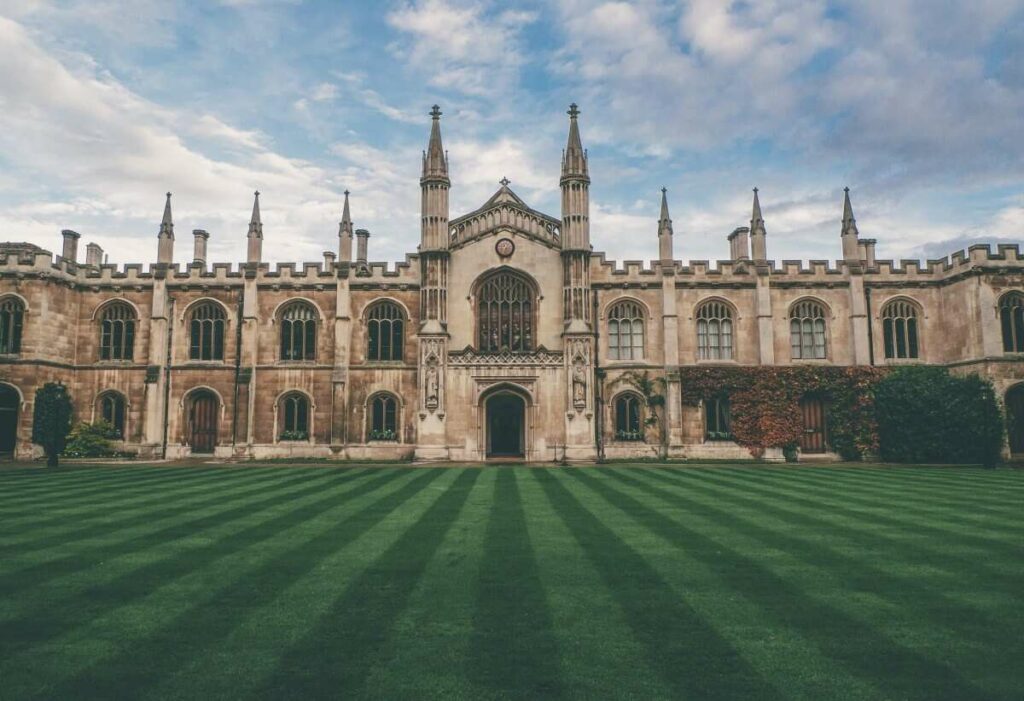The concept of identity is a fascinating area within sociology. Many things in life can mould one’s identity. However, for this post, I’ll focus on the total institution, popularised by Erving Goffman in his book “Asylums”. So, what is the total institution? So, what is the total institution? It is understood simply to be a place of work or residence that cut many similarly situated people off from broader society. This would be for a considerable time, and together, they lead an enclosed, formally controlled round of life. Ok, maybe I was a little too liberal with the word “simply”.
Goffman divided total institutions into five types, describing them by their function: to care for the disabled, “incapable” and harmless; contain those with infectious diseases; protect the community from “dangerous” people; enable the collective pursuit of an educational or work task, and; provide sanctuary for those who have voluntarily retreated from society. I will be looking specifically at the boarding school as an example of the total institution. Despite boarding schools not encapsulating Goffman’s total institution completely in modern society, they retain an element of a traditionally totalising structure.
What is identity?
Professor Susie Scott stated that identity is a set of integrated ideas about the self. The roles we play and the qualities that make us unique. So, one’s identity exists within the social world. People interacting in routinised and systematic ways create the social world. Consequently, we are assigning all experiences shaped in socially constructed structures, institutions, and normative frameworks. We have an idea of “who’s who” and “what’s what”. Like my previous posts of different social settings, we have a succession of situated selves that we inhabit as we move between social locations. So, in a very basic nutshell, our identity is an average of these situated selves. This ultimately creating our overall sense of identity.
Considering this post is looking at the total institution, it would seem wrong not to analyse Goffman’s understanding of identity. Goffman broke identity down into three forms: personal identity, social identity, and ego identity. He seems to be a big fan of breaking things down into manageable chunks for simpletons like myself! Personal identity consists of the unique characteristics of a person. Social identity is the virtue of one’s memberships of social categories. Finally, ego identity refers to the subjective sense of “who we are” or who we believe to be. These multi-dimensional classifications of our human world identify our places within it as individuals and also as members of collectivities.
Identification
Eglin and Hester stated that everyone undergoes identification, which is also understood to be “membership categorisation”. For example, I identify as a Spurs fan. We are always associating ourselves with something. Therefore, the process of identification is a necessary accompaniment of identity.
“Organisations are constituted in implicit behavioural norms and customs, in explicit rules and procedures, in criteria for recruitment, in divisions of labour, in hierarchies of control and authority, and shared objectives”.
Richard Jenkins, 2004
Hence, identification and groupness are understood to confine the landscape of options. Which, in turn, can demand unbending loyalty, which ultimately influences one’s base interests and consequently one’s identity.
What is a total institution?
Ok, now we have a pretty comprehensive idea of identity’s definition in sociological terms. It’s pretty overwhelming, but I hope I explained it well enough. Let’s turn our attention to understanding what a total institution is. I know I briefly explained it in the introduction, but I think it’s vital we look at it in a bit more detail. In general, social institutions involve established practices, relations or culturally normative routines of interaction. Like I mentioned in both the Sociology of Shopping and the Sociology of the Pub posts. These may or may not take place within a bounded site. Therefore, it is clear how institutions and organisations can influence one’s identity considering patterns of interaction socially reshape the self. But again, we are only specifically interested in the total institution today.

Total institutions are places where their “inmates” are confined around the clock. Inmates are immersed in an encompassing environment and eat, sleep, work all together within the same site. Goffman understood a total institution to consist of four key features: day-to-day life within the same place and under the same authority, being treated alike as one anonymous mass, the inflexible timetabling and scheduling of activities, and the orientation of these activities towards an institutional goal. A total institution is not only an asylum, which Goffman’s study analysed and coined the idea. Total institutions are also institutions such as army barracks, boarding schools, and prisons, etc. All of which involves the segregation of a specific group to be reformed and “improved”. Lucky me, hey?
Reinventive institutions
Ok, maybe I’m being too critical. I probably shouldn’t lump my old school into the same category as a prison or mental asylum. Within contemporary society, the total institution is becoming more uncommon with the emergence of a new institutional form; the reinventive institutions. Susie Scott explained that these institutions have arguably more positive effects on self-identity. They aim to be empowering, emancipating and transformative. Seem a lot nicer, am I right? This is where you would place modern-day boarding schools and possibly some holistic spiritual retreats. Regardless, these ever-so-slightly different types of institution are still in the business of structuring and reconfiguring personal identity. Arguably, these institutions always address society’s needs. Ultimately, an institution is a pattern of behaviour in any particular setting that has become established over time as the way things are and should be.
Again don’t get me wrong, I don’t have a vendetta out for boarding schools and resented my time there. It may seem like I’m unearthing some repressed memories of my time and want to tarnish boarding school reputations with a bad brush, but I promise, I’m not! Boarding schools main aim is to improve the students’ life chances through by widening their academic and cultural prospects. However, it’s essential to look back at my time at school now I’ve studied Goffman and the construction of identities. I’m not saying the school was like an asylum where I was locked up; I loved my time there! But, the boarding school does retain many features of Goffman’s total institution.
The rupture
Sounds like a cool name for a film, right? But alas, students embarking on their boarding school experience find themselves faced with a rupture. This rupture is a break in their everyday experience, as students must confer a personal meaning to an unfamiliar situation. Joy Schaverien stated that the feeling of being sent away from home could be a relatively traumatising rupture (it was Joy, it really was!). When I started boarding school, I faced this rupture. My cultural understanding of what “school” was was shattered, and I had to quickly adapt to the new surroundings, rules and traditions. This rupture breaks all the individuals down; thus, each person is initially at the same point. In the beginning, every student is nothing and at the bottom of the hierarchal system.
Interestingly, from my experience, you find those that have all faced this rupture helping each other to confer a personal meaning to the unfamiliar situation. This ultimately builds social cohesion. Susie Scott stated that students are “surrounded by a community of significant others who are undergoing the same transformation and who share the same motivation to interpret it positively”. A boarding school’s rules, specific ritual objects and hierarchical social structures present shared meanings to actions, changes and transitions. Like other total institutions, these systems of laws are intended to transform pupils into obedient, conforming and socially integrated beings who would “maintain standards”. Thus ultimately upholding the institution’s social order. So basically, I’ve been moulded into the perfect citizen, sociologists’ words, not mine.
Block living arrangements
Pupils usually have a minimal amount of physical space. When I started boarding school, I lived in a cubicle which I shared with three others. However, only partitions separated the whole floor. So I mainly lived with all of year seven and eight in my house; around twenty students. Sociologist Edward Casey suggested that “where we are – the place we occupy, however briefly – has everything to do with what and who we are”. Think back to my post about the Sociology of the Home. For my first few years, “the messy one” was my identity (a bit rude, I know). Parents and other students would be able to locate my bed space, regardless of my presence. This shows how my identity was continuously being shaped by my area of living, despite being approximately 3m2.

Collectively controlled
Furthermore, within boarding school, control is exercised over private bodily functions, such as collective sleeping arrangements imposed by dormitories, long dining hall tables and shared bathrooms. Pupils’ movements are collectively controlled and managed, such as wearing uniforms and moving around the grounds altogether. This helps strip pupils of their identity equipment they would otherwise use to assert their individuality.
Every meal, we would have to “squad up” as either juniors or seniors just outside the house and would march to the dining hall. The fact we walked as a collective, in step, showed the withdraw of individuality. This was not exclusive to meals; we would also march in groups to the chapel and the assembly hall. We would even have specific areas designated for us to sit and would have to sit together. This sucked if you sat next to someone who you hated or, even worse, smelt!
Rules regarding your body
In addition to these examples of control, micro-level movements of the body are subject to regimentation. This is achieved through rules such as arriving to class on time, sitting up straight, wearing the uniform correctly and having one’s hair worn according to the school’s rules. Uniform at my boarding school was more restrictive than usual; the school provided every article of clothing other than underwear. I often disobeyed the rules and wore “illegal” colourful socks to show a small glimpse of my previous identity before entering the institution. I was regularly reprimanded, which ultimately begged the question, was it worth it? Individuals are slowly stripped of their original character to allow reinvention.
When I went back home for holidays, I quickly came to terms with my previous friendship groups deteriorating as I often heard the expression, “you’ve changed”. I no longer wanted to do what seemed so “normal” before I started boarding school. At the time, I chalked it down to growing up. It is evident now that my identity was continuously undergoing reinvention. Students of boarding schools are controlled by the discipline of performative regulation, considering students submit themselves to the institution’s authority. Consequently, internalising the institution’s values.
Boarding house identity
Within a boarding school, pupils are separated into houses and encouraged to cultivate a house identity and loyalty to this peer group. Each house has its own rules known as “house rules”, a relatively specific and formal set of “do’s and don’ts”. Think of the houses in Harry Potter, each house has its own identity! That’s why we do quizzes to see if we would be in Griffindor; I’m certainly a Ravenclaw.

The Charming Rebels
I had the pleasure of being a part of two boys’ houses. Both houses had an identity, and both identities could not be further apart. Retrospectively, I am entirely aware of how I changed as a person when I transferred houses. My first house was known as an anarchic house and was a house ran by the boys. A key characteristic of members of this house was deviant. We believed we were “charming rebels” who were not conformists. Overall, the house had a “lad complex”, and the house’s already installed identity moulded me. I started being deviant and believed the rules did not adhere to me. It was the same for my older brothers, who also lived in the same house, which shows how an institution’s identity can continue regardless of the inmates changing.
When I moved to my second house due to the first being closed, my housemates recognised me as an “other”. It was evident; I lacked the new house identity. After a small amount of time, I managed to assimilate myself into the house, consequently shedding all the previous house traits and taking up values aligned with the new house’s ethos. Looking back at my time at school, I was two different people. I became more hard-working, rule-abiding, and overall, a nicer person. However, this experience sheds light on how an individual’s identity becomes the house’s and the role of personification.
School friendships
As previously mentioned, upon entry to boarding school, every individual is the same as they are all “broken down”. Through the controlling of the social resources that pupils have access to, social cohesion is reinforced. First, we were not allowed mobile phones for the majority of the day but were given them for a brief 1-hour period in the evening to phone home. The only social outlet we had during the day was each other; we became stronger friends, which improved our social cohesion.
Myself, and many of my friends, all say, “You do not make friends as you do at boarding school”. Within the military, Hannah Hale discovered the same understanding. Several commandos, who she interviewed, stated that relationships within the military are unlike those possible in civilian culture. In the military, the uniform is re-contextualised to symbolise military identity development, similarly to the attire worn at school.

Bullying and hegemonic masculinity
At boarding school, you quickly discover that there are several clearly defined rewards and privileges for obedience. Let’s not forget to mention the many punishments designed to be the consequence of breaking the rules. Despite institutions’ aims to fundamentally change their inmates’ identities, some deviant traits are produced within its walls that differ from the “positive” main identity traits. Scott Poynting and Mike Donaldson’s study of a boarding school in Australia revealed an acceptance of bullying, sexual abuse, violence and brutality as a routine part of school life amongst its students. Furthermore, similar arguments about the legitimation of violence within boarding schools exist.
Hegemonic masculinity exists within schools’ institutional structure. Bullying and similar activities become almost ritualised. These ritualised violent “ways of life” can exist within boarding schools due to peer solidarity reinforcing an implicit code of silence. Pupils follow the informal rule of not “dobbing” on each other. Interestingly enough, many staff will happily turn a blind eye to this wrongdoing following the mantra of “boys will be boys”.
The bullying circle of life
Bullying was a huge part of my school career and many of my peers. It was a way of life. Seniors would bully the Juniors, and when the Juniors became Seniors, the same would occur. It was a vicious cycle and not quite the circle of life we learned about in The Lion King!
However, no matter how bad your experience of bullying was, you would never “grass”. If you were to tell the staff of any bullying behaviour, you would face a significant loss of respect amongst your peers. This was ultimately the most crucial part of the school; to be respected and liked. Any frustration on bullying being part of life would not be directed at the rules or the teachers who turned a blind eye. But those younger and smaller than you would feel the full extent of your frustration. This obviously, in turn, helped bullying exist within the institution.
Release anxiety
Goffman argued that inmates of reinventive institutions might feel such a strong sense of commitment, consequently obtaining a “release anxiety” about leaving. It certainly took me a while to adapt to the outside world upon leaving school. My school was known as a “bubble”, and everyone acknowledged the difficulty of going. Many ex-pupils would return as teachers or housemasters and remain for years due to this release anxiety. Despite this, inmates within an institution do not discard their previous identities completely. The fact I can tell the story of being within an institution proves that the narrating author-self survives. Instead, we merely move to another institution to “unlock more of our potential” and believe we made the journey under our own volition.
Finally…
It’s been a long one, comrades, and I appreciate you making it this far! Again to reiterate, I didn’t hate my time at school; I actually really enjoyed it! Just analysing it sociologically is interesting (I hope!). During my time at school, my identity changed a great deal. What is interesting is that I personified whichever boarding house I was in within the institution. From being a deviant and non-conformist to becoming more willing to obey rules, believing they are in my best interest. Arguably why my first house was closed as a boarding house. Its ingrained identity had strayed too far from the institutions’ desired personality traits.
Despite a few attempts to portray my previous identity, such as wearing colourful socks, I was punished. This consequently made me stop trying. My friends who would come back to school after a long holiday expressing their identity, such as having dyed their hair, were immediately sent to the barber. In hindsight, my school saw any attempts to show previous identity traits as a threat to the all-important cohesion integral to its culture. Through the school’s archaic names for rituals, traditions and ceremonies, a sense of solidarity and commitment was encouraged.
I’m concluding, I promise!
Overall, boarding schools alter your identity a great deal, whether you are aware of it or not. Whether you believe the altruistic rhetoric of “increasing your potential” or “becoming a more rounded person”, the ultimate aim is precise; identity reinvention.
It is hard at first to come to terms with the strict rules and regulations. Many people, including myself, initially beg their parents to let them leave. However, these become normal, and the pattern of behaviour in the boarding school setting becomes established over time. Unambiguously, total institutions change one’s identity a great deal, which was undoubtedly the case for me. However, this inevitably comes as no shock due to Goffman’s critical features of a total institution being the orientation of activities towards one institutional goal, namely that of re-socialisation.

